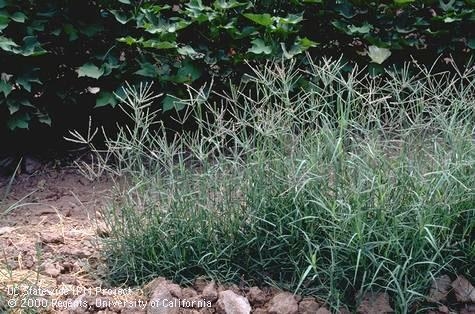As the days get shorter and the temperatures begin to cool, now is the time to practice weed management for annual cool-season weeds. It's also not too early to consider management for weeds that emerge in springtime.
Using integrated pest management (IPM) methods can help reduce the presence of most weeds. In lawns, good practices such as proper watering, mowing, and fertilizing can help maintain healthy turfgrass. Likewise, in landscapes, hand-weeding, cultivation, and use of mulches can be effective in controlling weeds. More specific information about these and other IPM practices can be found in our Pest Notes publications on weed management in lawns and weed management in landscapes.
You may not think identifying weeds is important, but not all weeds are controlled the same way. UC IPM's weed gallery and weed identification key can help you identify your weeds and point you to information to help you manage them as effectively as possible.
While most weeds in lawns and landscapes can be managed with nonchemical methods, for difficult to control weeds, you may consider using herbicides (pesticides). Be sure to select the appropriate herbicide for the weeds you may have in your lawn and/or landscape. Do not mix up your own herbicides at home; this can be ineffective and dangerous. When using herbicides for weed control, be sure to follow the directions on the label and wear the appropriate personal protective equipment.
Author - Associate Director for Urban & Community IPM/ Area Urban IPM Advisor
